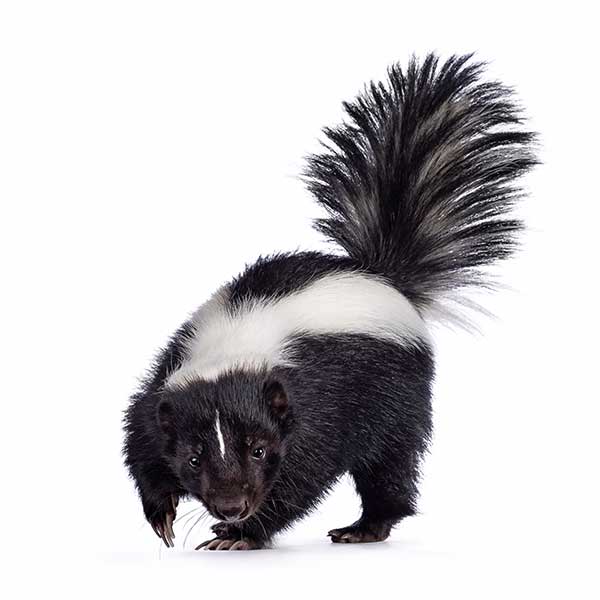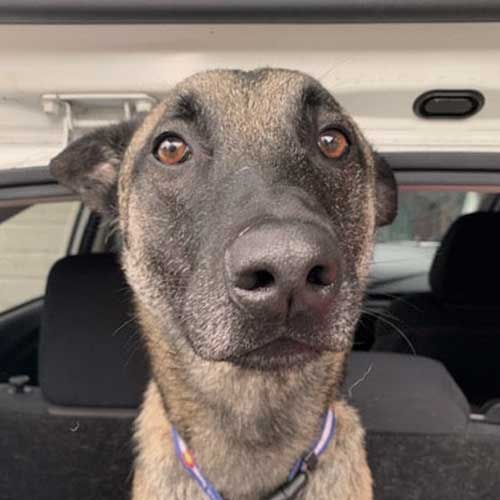FAQ
Frequently asked questions
CLICK TO CALL NOW

Should I blow-dry my dog after de-skunking
No. Not ever. If there is any skunk spray residue, the heat can convert it to a lacquer-type substance that becomes virtually impossible to remove.
How should I protect my dog's eyes during the de-skunking process?
Please consult your veterinarian, though I do recommend one product in my guide.
Can dogs get hypothermia during the skunk spray removal process?
Yes, absolutely. Be extremely conscious about weather conditions when de-skunking your dog outside. Avoid cold temperatures and wind. Wind chill is a very real risk.
What is your opinion on air fresheners and deodorizers that some people use to manage the skunk spray odor in their homes?
These actually present a big problem in the marketplace. Most folks will light candles or use heavily perfumed, sweet-smelling room deodorizers. These remedies rarely do much. A skunk’s odor is so powerful that the best analogy I can offer is of someone who has not taken a shower in a while and then puts on cologne. They’re not fooling anyone.
What is your experience with commercial de-skunking products?
Most of these only dilute and cover the odor with a heavy perfume. I have de-skunked many dogs that were initially treated by various commercial products.
How do I eliminate the skunk spray odor residue that I noticed on my dog the day after I de-skunked her?
These actually present a big problem. Most folks will light candles or use heavily perfumed, sweet-smelling room deodorizers. These remedies are mostly ineffective. A skunk’s odor is quite powerful and simply persist along with the heavy mostly synthetic fragrances in the air.
What common mistakes do people make when de-skunking their dog?
There are many mistakes people make while attempting to de-skunk their dogs. Improper leash types and use of ineffective folklore remedies such as tomato juice are just a few common errors. There are several signs that arise during the process, however, that can serve as your guideposts. I talk about these in my guide as well.
Are there any tricks you have learned while applying this formula that are not generally known?
Yes. I will explain each one in detail in my guide, De-skunk Your Dog Now: The Definitive, Do It Yourself, Step by Step Guide, available at my online store. These tricks will help protect you and your dog and help you de-skunk your dog quickly and effectively the first time.
Is skunk spray harmful?
No. Skunk spray is a skunk’s defensive weapon but it is not poisonous or venomous.
Should I bring my dog in the house after it has been sprayed by a skunk?
Never. If you bring your dog in the house, you will now need to de-skunk your home as well as your dog. If your dog is at risk of hypothermia or some other danger, however, you should move to a wind-protected area or inside a garage.
My house smells like something is burning when my dog came into the house. Why?
The burning or sour smell is typical of skunk oil attacks (Types 2 or 3). These occur mostly when the skunks are coming out of dormancy in late January or early February.
Should I treat my dog with anything other than the tried-and-true hydrogen peroxide, baking soda and Dawn® solution?
Skunkmasters® has de-skunked dogs that were treated with all types of failed solutions. With folklore remedies, the best case scenario is that they produce no effects; more often, though, these result in negative effects.
Commercial remedies tend to yield marginal results at best. We have de-skunked more than 2000 dogs with our formula, when deployed properly, eliminates virtually any skunk odor on your dog. Many times, however, there is a residual, degraded, non-aerosol skunk odor which exudes out of the dog in subsequent days after the initial de-skunking. Skunkmasters® is now offering AfterSkunk® Liquid to help deal with these delayed, degraded odors which do bother many people.
What is the correct way to use the formula? Is there an incorrect way to use the formula?
I always suggest using proper eye protection for dogs prior to starting the de-skunking process. Once the eye protection is in place, if the dog is yours, start on top of its head and work toward the dog’s tail. If the dog is not yours, start at the tail, and work forward so that you can acclimate the dog to you and your touch. I always start at the tail and completely treat the entire dog.
What is the nature of the skunk spray stream? What is its basic chemical composition?
Skunk spray comes out both in a stream and a spray simultaneously from two glands on either side of the skunk’s anus. The skunk can shoot its stream with a high degree of accuracy up to 16 feet. Once a skunk sprays, it can take days to regenerate a fresh supply. The spray itself is an organosulfur compound composed mainly of thiols or mercaptans.
The smell can be detected by humans up to 3 miles away.
Don’t waste time with the many ineffective folklore remedies that can hurt your dog!
Having started as the result of a skunked dog-walking incident, Skunkmasters® has de-skunked well over 2000 dogs and 1800 homes in the greater Chicago area

Don’t Wait to Call!
Skunkmasters 24/7 emergency skunk spray service caring staff are available. Time is of the essence. Get the help you need!
Servicing Northeast Illinois
Call 847-232-0066 for Immediate assistance if your Dog got sprayed by a skunk. We offer immediate Dog and House De-Skunking Services in Northeast Illinois 24/7, 365 days a year!
